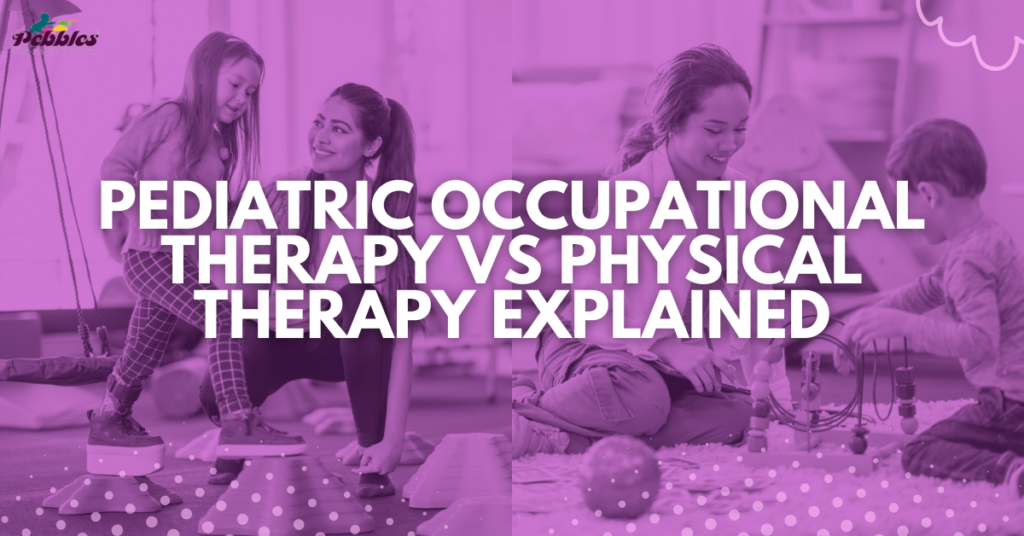Pediatric Occupational Therapy vs Physical Therapy Explained
Pediatric occupational therapy vs physical therapy is one of the areas where differences should be well understood since different benefits are accorded to children. Although both occupational and physical therapy deal with children’s development, they each focus on separate abilities. This blog explains the difference; determine which could best suit your child’s growth and recovery needs.
What is Pediatric Occupational Therapy (OT)?
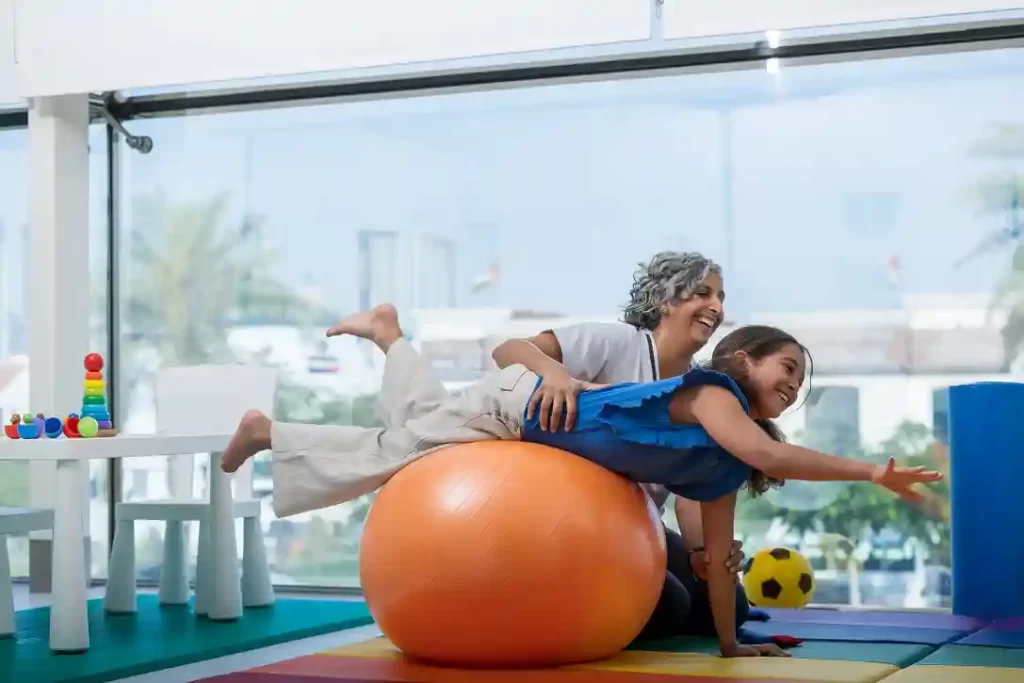
Pediatric occupational therapy, in brief OT, is a sort of therapy service designed to enable children to prepare for the ability to carry out everyday tasks independently. Children with physical, sensory, and cognitive challenges have an occupational therapist OT who creates very individualized treatments.
These treatments are considered to help upgrade motor skills, sensory processing, and cognitive skills. Pediatric occupational therapy services mainly aim to enable a child to perform daily tasks like dressing, eating, and playing.
This holistic approach makes for a meaningful base in comparison in the context of pediatric occupational therapy vs physical therapy.
Why Would a Child Need Occupational Therapy?
Children may require pediatric occupational therapy OT for various reasons. For example, a child may require it if he or she cannot manage everyday activities such as holding a pencil, coordinating movements, or dealing with sensory overload.
Therapy focuses on perfecting the functional skills, enacted skills that help ensure functionality at school, home, and social settings. Occupational therapists typically do assessments related to the developmental needs of a child and offer treatment to help a child become more independent.
Whether it is improving fine motor skills, or how to stop or deal with sensory processing issues, occupational therapy OT plays the most important role in the ability of a child to thrive in every single everyday task.
How Occupational Therapists Treat the Whole Child?
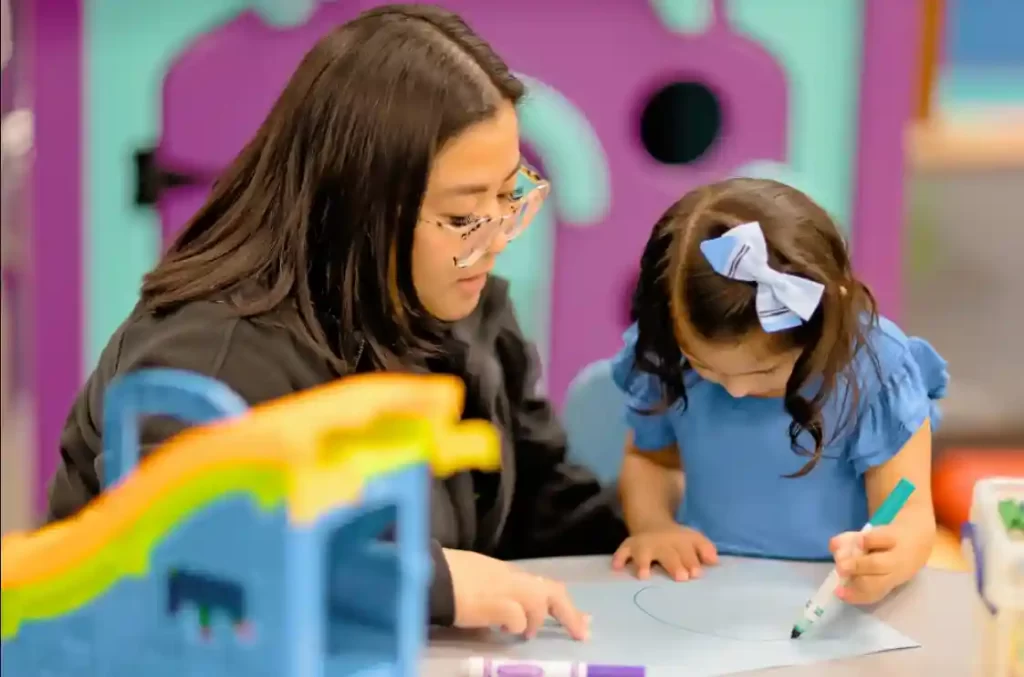
Occupational therapist OT professionals adopt a holistic approach to treating children, addressing concerns in not only one aspect but in the “whole child.” Focusing on aspects such as physical, emotional, cognitive, and social, these professionals accordingly design interventions to support an individual’s development.
Pediatric occupational therapy services improve children’s fine motor skills through play-based activities and structured exercises enhance their social interaction, and allow better sensory processing.
Ultimately, the goal of the therapist is to focus on improving confidence and independence so that the child could participate in daily activities. This all-encompassing care characterizes the singular occupational therapy role in pediatric occupational therapy vs physical therapy.
Common Conditions Treated by OT
Pediatric occupational therapy OT can be a very effective treatment for many conditions such as
- Autism spectrum disorders
- Development Delay
- Sensory processing disorders
- ADHD
- Learning disabilities
- Cerebral palsy
This often interferes with a child’s ability to function independently. Pediatric occupational therapy services ensure that the therapists use intervention strategies that improve motor skills, sensory responses, and overall functional capacities so that children can lead more independent lives.
What are the Skills that a Pediatric OT can Address?
OTs work with children to improve a wide range of skills that impact their daily lives. These include:
- Typing with fingers, writing, or using utensils
- Sensory processing, helping children respond appropriately to their environment
- Self-care activities such as dressing, feeding, and grooming
- Cognitive and social skills to interact with siblings and family members.
Occupational therapist helps children to use their skills independently, hence making their lives better through occupational therapy. The concepts of Pediatric occupational therapy vs physical therapy stand testimony to the differences the two approaches could make in supporting children to grow.
What is Pediatric Physical Therapy (PT)?
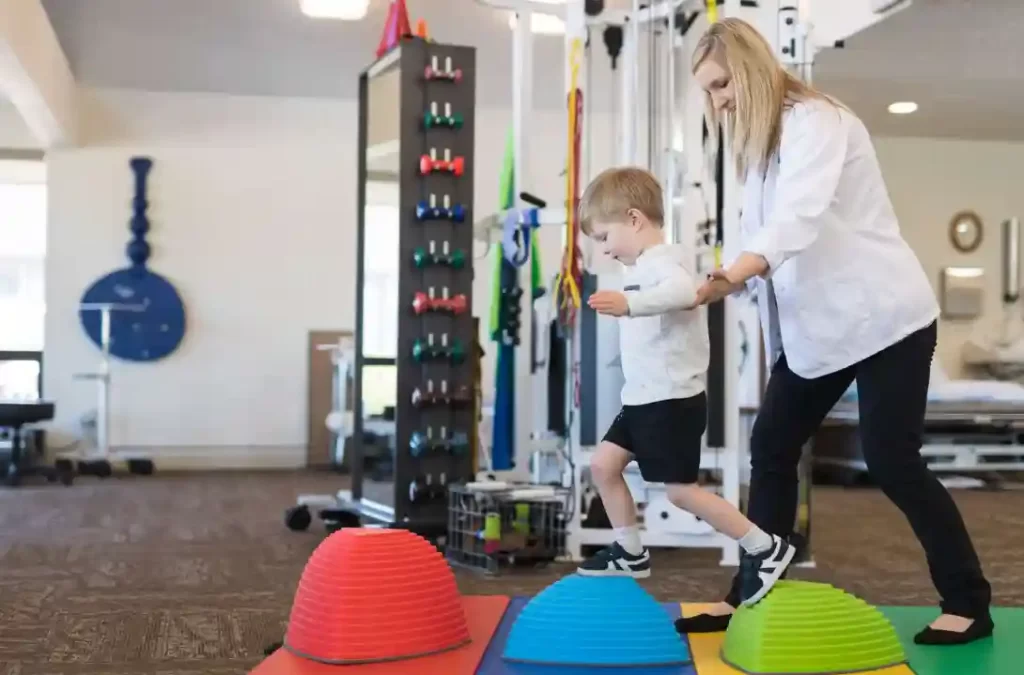
Pediatric physical therapy (PT) works with children to make them stronger, balanced, and coordinated. A physical therapist (PT) working with children often has issues with movement whether caused by injury, illness, or developmental delays.
Personalized pediatric physical therapy services may provide children with the ability to move freely and safely. PTs use exercises, stretches, and play-based activities to support children in enhancing their motor skills so they could possibly be optimally developed physically and independent.
Why Would a Child Need Physical Therapy?
Physical therapy (PT) can be required by a child who has difficulties in moving or is physically disabled. A child suffering from cerebral palsy, muscular dystrophy or after surgery can come out as a helpful case for the personalized pediatric physical therapy services.
The focus of physical therapy is on the strength of muscles and balancing and coordinating a child’s activities. A physical therapist focuses on making it easier for the child to move around, either to learn how to walk or improve posture, or to become more fit for everyday activity. Early intervention can very much help a child in achieving physical milestones.
What is the Goal of Pediatric Physical Therapy?
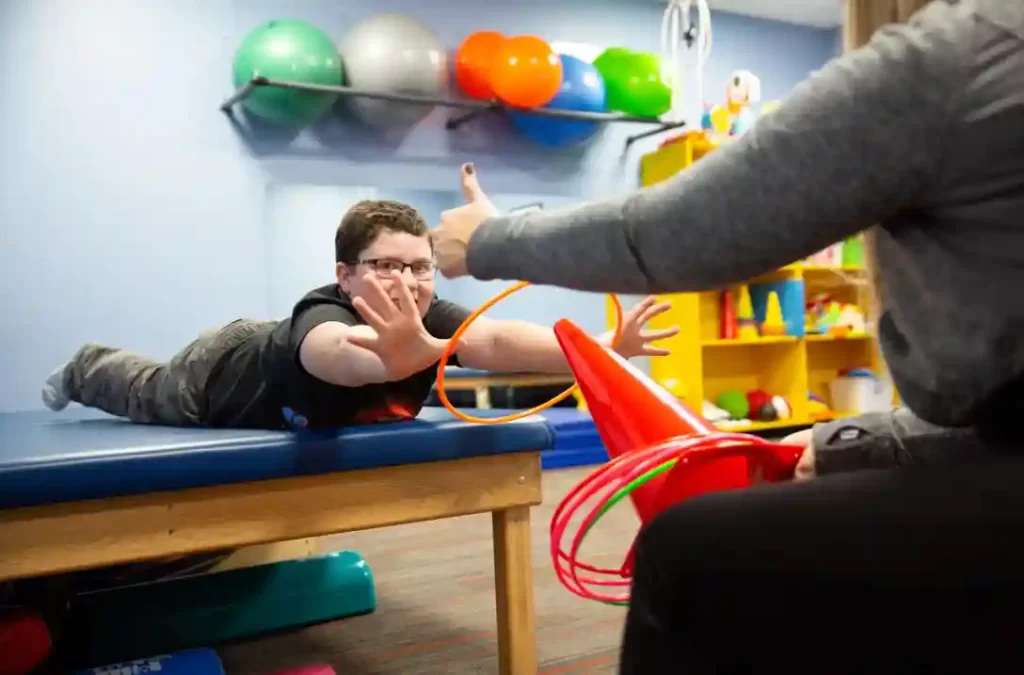
The purpose of pediatric physical therapy is to help the child become competent with doing physical tasks. Competence, in this case, means increasing independence. A physical therapist focuses on specific interventions aimed at improving strength, balance, posture, and coordination.
PT offers aids for enhancing the level of confidence that children with movement difficulties may regain regarding their physical capabilities. It ranges from gross motor skills to moving and jumping, or more defined movements, which are meant to make sure the children can perform tasks independently in their daily lives.
Common Conditions Treated by a Physical Therapist
Pediatric physical therapy PT can be quite effective in the treatment of conditions that include
- Cerebral Palsy
- Muscular Dystrophy
- Developmental Coordination Disorder
- Post-surgical Recovery
- Genetic and Neuromuscular Disorders.
These conditions impact the movement and motor development. A physical therapist focuses on trying to improve muscle strength and coordination and independence in the physical movements of a child. With personalized pediatric physical therapy services, children can triumph over their limitations in mobility and become more interactive with life.
Know more about the conditions treated by pediatric physical therapists.
Key Differences Between Pediatric Occupational Therapy vs Physical Therapy For Kids
Knowing the difference between occupational therapy and physical therapy allows one to discern which one might better serve a child. Both therapies serve to achieve increased function in daily life for a child, but they target different functional areas.
The main Pediatric occupational therapy vs physical therapy difference is seen in their goals. While occupational therapy (OT) aims at teaching children to utilize fine motor skills, sensory processing, and self-sustaining skills, such as being fed or dressed, in the most effective way possible, the occupational therapist instructs a child in being better at improving or restoring independence actually in daily activity, which is both physically and cognitively reliant.
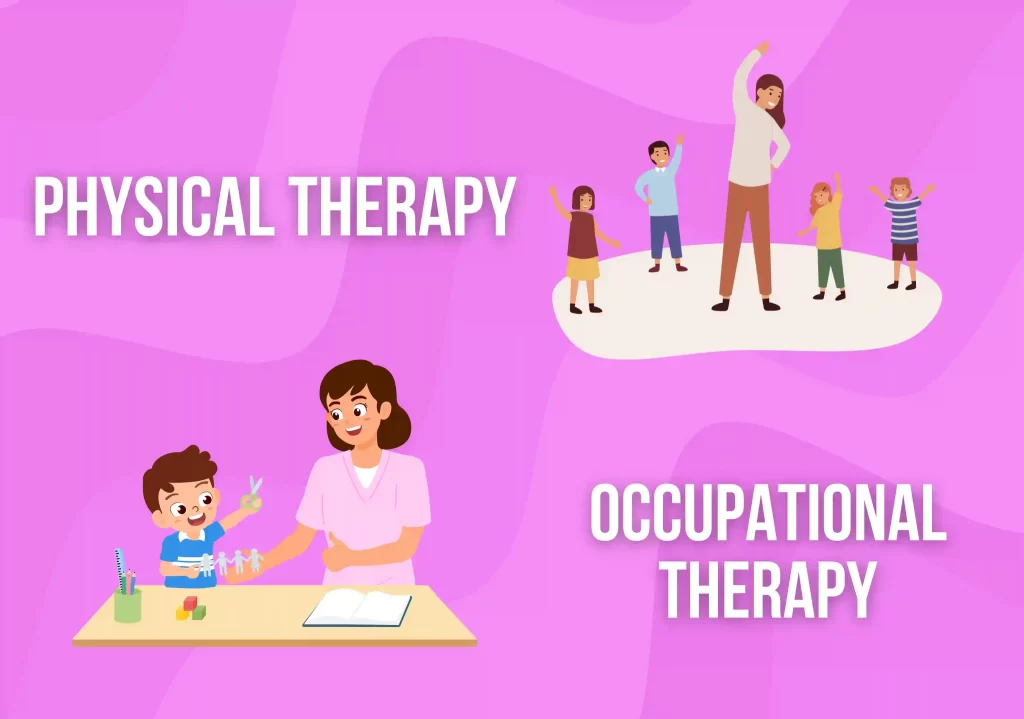
In contrast, physical therapy (PT) targets to increase gross motor skills such as walking, running, and jumping. A physical therapist would work towards having a child’s muscles be more active, coordinated, balanced, and mobile.
Comparing occupational vs physical therapy, both occupations are usually complementary to one another. Thus, occupational therapy sets the child’s overall ability in terms of engaging in life activities against the backdrop, whereas PT concentrates on movement and physical capabilities.
This is basically what is the difference between occupational therapy and physical therapy. In simpler terms, the difference is that occupational therapy affects a child’s ability to acquire and develop self-help skills in the daily living environment as well as sensory processing, whereas physical therapy centers on the strength and mobility development.
The decision whether a physical therapy or an occupational therapy will be included in the services is dependent on the developmental needs and challenges that are unique for the child. physical therapy or occupational therapy — both are applicable in helping a child attain optimum all-around development and become functionally independent.
The Overlap Between Physical Therapy and Occupational Therapy
In spite of being distinct fields, pediatric occupational therapy vs physical therapy often overlap in some care areas. Both therapies are targeted towards improving the functional abilities of a child to help them reach greater independence.
The major difference between physical and occupational therapy is the focus difference — Occupational therapy tends to pay attention to significantly more particular aspects than do physical therapies, with special attention to fine motor skills activities of daily living. In comparison, a general focus of physical therapy lies on improvement in gross motor functions and mobility. However, it does help children lead more fulfilling lives.
Areas of Overlap Between OT and PT
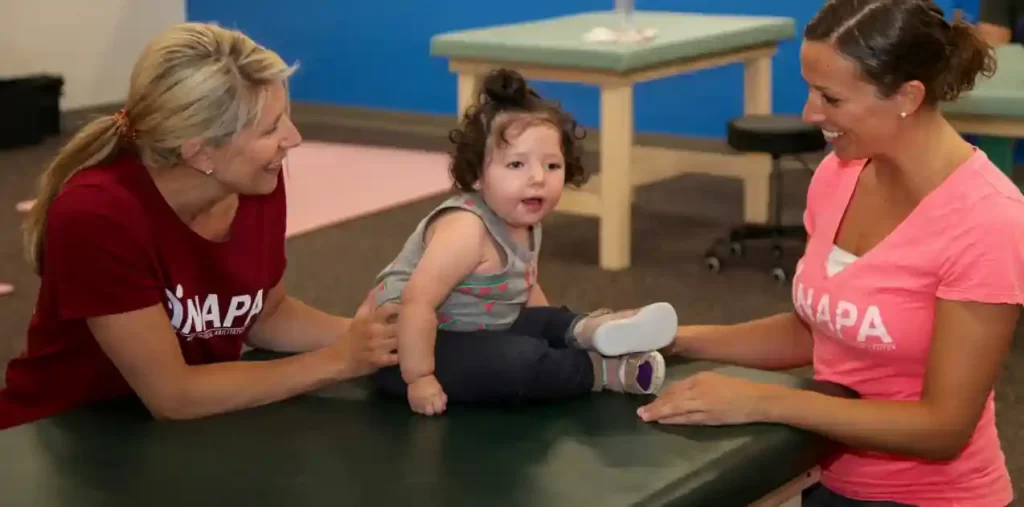
| Occupational Therapy (OT) | Physical Therapy (PT) |
| Focuses on activities of daily living | Focuses on mobility and physical strength |
| Uses exercises for motor skill development | Uses exercises for motor coordination |
| Works to enhance posture and balance | Improves posture and balance |
Interdisciplinary Approach
Often, it is considered an interdisciplinary approach whereby there is a combination of occupational therapy and physical therapy or both with the treatment of a child. The work of a therapist is commonly combined with that of another therapist or therapists in dealing with a child’s needs from a holistic perspective.
This method is very effective for complex cases that require concern with fine as well as gross motor skills. Combined work by OT and PT secures these children not only physically stronger but also better developed in the necessary cognitive and sensory skills for everyday life.
Common Goals in Treatment
While OT and PT have different foci, they share common treatment goals, including:
- Improving coordination and balance
- Improved motor skills-fine and gross
- Increasing independence in activities of daily living.
- Alleviated pain and physical activity.
These common goals underline how both the therapies supplement each other in promoting a child’s overall functional growth.
Physical Therapy and Occupational Therapy: Working Together
The merging of both therapies brings about a comprehensive treatment approach, therefore, making sure that children obtain the best support individualized for their needs.
Pediatric occupational therapy vs physical therapy are two of the most crucial disciplines that generally complement each other in the treatment of children. Although both may have different purposes, the combination of these therapies can enhance rehabilitation effectiveness for a child.

Physical therapists assist children in gaining strength, strength, and mobility. They provide support to children in becoming functional once again if injured, reducing pain, and thus improving daily functioning.
Occupational therapists enable children to acquire the skills of living. They can enable a child with poor fine motor skills to write properly or help a child with poor social skills to relate to her peers.
A mutual collaboration between the physical therapists and occupational therapists facilitates an integrated type of treatment plan, which then is able to be applied to every child in both physical and functional aspects. For example, a child under convalescence from surgery will need physical therapy to regain strength and function well physically, while occupational therapy will support them to learn how to do things for themselves.
The combination of the two therapies gives a holistic approach and can ensure children get well-balanced support addressing all the different needs of a child.
What is the Difference Between a Physical Therapist (PT) and Occupational Therapist (OT)?
Needless to say, to explore what is occupational therapy vs physical therapy requires a great understanding of the roles played by these two specialists.
Pediatric occupational therapy vs physical therapy is a significant distinction simply because one needs to differentiate between the PT and the OT.
| Aspect | Physical Therapist (PT) | Occupational Therapist (OT) |
| Focus | Mobility, strength, and overall physical function | Daily living skills and functional independence |
| Common Conditions | Sports injuries, post-surgical rehabilitation, pain management | Developmental delays, sensory processing issues |
| Techniques Used | Exercises, manual therapy and modalities | Adaptive Occupational Therapy techniques and modification, sensory integration, skills training |
In short, physical therapy and occupational therapy difference vary with regard to their objectives and approach. While physical therapists deal with body mechanics, occupational therapists empower children with the ability to perform meaningful activities. Thus, understanding what is the difference between a physical and occupational therapist means to parents will indeed aid them in making the right decisions about the care of their children.
How to Decide Which Therapy is Right for Your Child?
It is very hard to distinguish between the two: pediatric occupational therapy vs physical therapy. Here are some things to be taken into account:
- Needs Assessment: You assess which particular problem your child is facing. Is it a mobility or everyday living problem?
- Discussions with Professionals: Talk about this with your child’s doctor or healthcare provider to understand if it will be helpful to your child.
- Combination of Both: Sometimes, a combination of both therapies would be the best. The physical therapists can then focus on mobility while the occupational therapists focus on skills.
- Trial Sessions: You could also have trial sessions for each type of therapy. You could assess your child as well as on how she may react to each therapy.
- Parent Feedback: Trust your instincts as a parent. If you really find something is working with one kind of therapy, it can be the right choice.
It will make a better idea to understand first for yourself the difference between a physical therapist and an occupational therapist if you want to make a more informed decision that meets your child’s needs.
Factors to Consider Before Choosing the Right Therapy for your Child:
Some of the key factors that guide you in selecting between pediatric occupational therapy vs physical therapy in respect to your child needs as follows:
- Child needs: Determine whether your child is mostly needing physical skills, such as standing and walking, or more daily tasks such as dressing and eating.
- Developmental Goals: What are your goals? If the outcome is that of enhancing mobility, then a course in physical therapy would be appropriate. If the result will be enhancing a child’s day-to-day functioning, then occupational therapy will be appropriate.
- Professional Advice: Discuss your child’s condition with your child’s health care physician. He or she will guide you on how best to select a therapy.
- Pilot Sessions: When you are not sure, try both therapies. This is an excellent way of determining which therapy method suits your child more.
With this, you now know why, and these factors will lead you to make the right decision regarding Occupational Therapy vs Physical Therapy For Kids.
Which is Better Physical Therapy or Occupational Therapy?
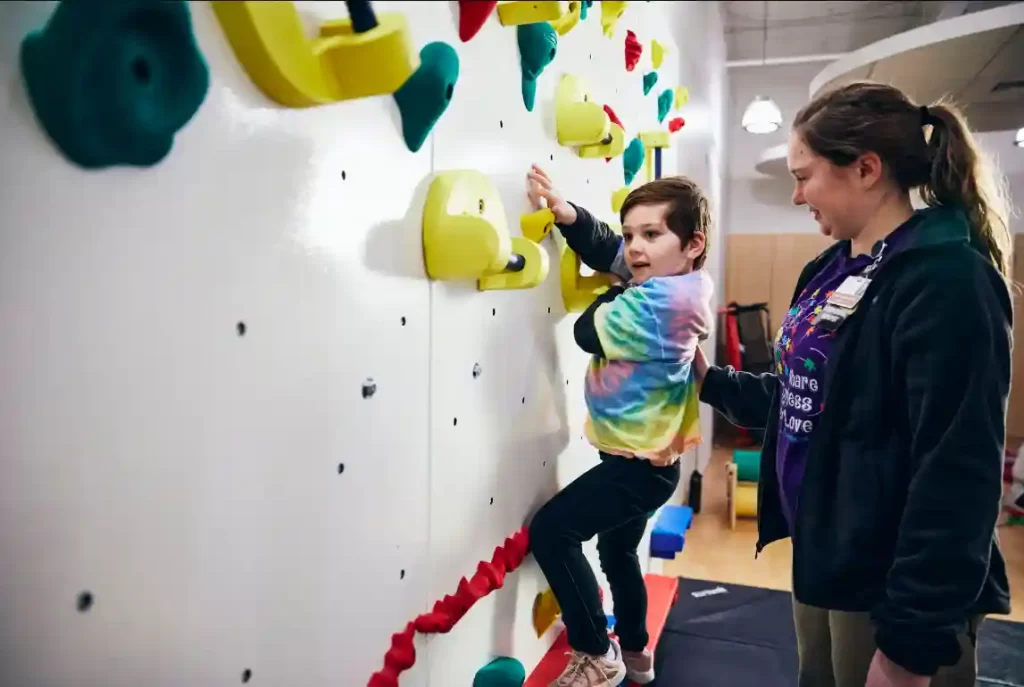
Which among them is better, physical therapy or occupational therapy, depends on the unique needs of your child.
- Physical Therapy: It shall be the best option for children who require improvement on mobility, strength, and physical function.
- Occupational Therapy: It is preferably applied to children in need of aid as to how to adapt the surroundings for better performance in everyday life.
Both have their advantages, and sometimes it’s not the question which one is good but which one is more appropriate to your child’s situation. Knowing occupational therapy vs physical therapy for children will enable you to make the right choice.
When is Occupational Therapy Recommended?
Occupational therapy is a good recommendation to children who have a problem with daily living due to a developmental condition. It can be classified under several groups:
- Problem in care tasks, such as dressing or personal hygiene.
- Sensory processing problems, where they are not able to cope with their environment.
- Learning disabilities that hinder them from engaging in various daily living.
If your child exhibits such problems, you might want to consider occupational therapy versus physical therapy as an area of intervention.
When is Physical Therapy Recommended?
Physical therapy is advisable when children have problems concerning:
- Injury-induced damage that disables mobility.
- Conditions that limit a child’s ability to carry on physical activities, such as cerebral palsy.
- Developmental problems associated with standing and walking.
In case your child faces mobility issues or is under rehabilitation due to an injury, knowing what is the difference between physical and occupational therapy will let you know whether PT is a good choice for them.
When Both Pediatric Physical and Occupational Therapy may Be Needed?
There are some cases where you need both pediatric physical and occupational therapy. These are mostly the cases when:
- A child with a condition that challenges his or her physical mobility as well as his or her capacity for daily living ability, like after massive surgery or injury.
- Developmental delays affect a child’s capability to perform physical activities but also affect him or her incapacity to perform things as efficiently as their peers.
For instance, a post-surgical child will require PT in order to regain the lost muscle strength and OT to be able to resume carrying out daily responsibilities. Understanding the correlation of OT and PT these therapies can help a parent design an all-inclusive program of treatment.
Importance of Physical & Occupational Therapy in Pediatrics
Both physical & occupational therapy in pediatrics play a vital role in facilitation towards general well-being and growth for a child in pediatric care. Both therapies are focused on changing a child to perform certain skills in executing everyday activities effectively.
Children, through physical therapy, manage their strength, coordination, and movement skills toward the performance of physical activities effectively. It aids in recovery due to an injury and improves their participation in sports and play for healthy lifestyles.
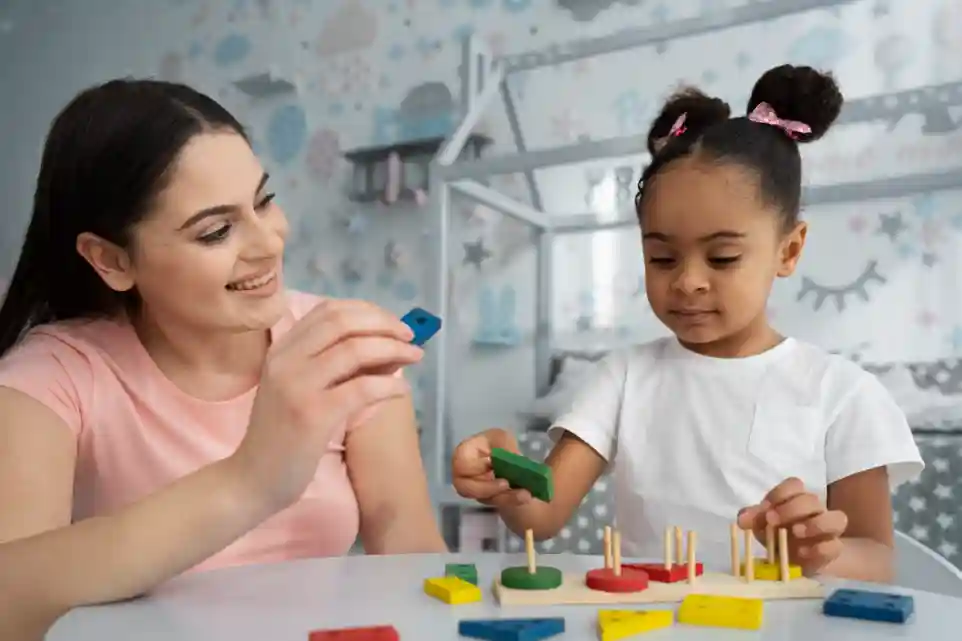
On the other hand, occupational therapy is more on the children’s development of skills that will enable them to complete daily activities, like dressing, feeding, and social interaction. As the children confidently interact with the environment, this therapy is crucial for developing independence and self-esteem.
The combination of these therapies will help children grow in a wholeness sense, so that they develop all the tools needed to thrive both in their physical development and functionality. Such knowledge will make a parent understand why occupational and physical therapists are crucial in the growth of his child and to seek help from them when needed. Knowing What is the Difference Between PT and OT? can add more precision to decision-making between different therapy options.
FAQs
Absolutely, physiotherapists and physical therapists pretty much refer to the same thing. The terms go by interchangeably in different regions. “Physiotherapy” is very common in the UK, while “physical therapy” is used in the United States.
Physio or physical therapy is more to do with enhancing physical activity, movement, and strength. Occupational therapy is interested in the development of skills an individual needs to work and live. The above discussion on occupational therapy vs physiotherapy shed light on the differing orientations.
No, they are two different fields of practice. Though both work to improve the quality of a patient’s life, the distinguishing factor between them is that occupational therapy is concerned with helping someone with his or her daily living activities, and on the other hand, developing a physical ability makes up physical therapy.
Both types of therapies differ in scope. Physical therapy essentially is rehabilitative in nature and designed to effect return to mobility, whereas occupational therapy helps a person acquire functional skills so that that person continues living and working independently.
A PT assessment is one that measures the physical strength, ROM, and balance of an individual. However, an OT assessment is to be conducted to measure the patient’s ability in attaining goals in daily life activities; the test may even include fine motor skills, senses processing, or a general performance for everyday activities.

